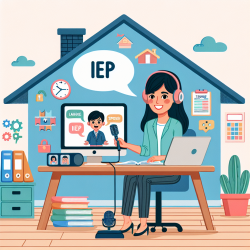Understanding the Gaps in Early Intervention for Children
Early Intervention (EI) is crucial for children with developmental delays and disabilities. However, as highlighted in the study "Child characteristics and early intervention referral and receipt of services: a retrospective cohort study," significant gaps exist in the referral and service access processes. This blog explores these gaps and offers insights into improving EI outcomes.
Key Findings from the Study
The study, conducted on a cohort of 14,710 children, revealed that only 18.7% of EI-eligible children received a referral, and just 26% of those referred received services. This results in a net enrollment rate of only 5% among EI-eligible children. Several factors contribute to these gaps:
- Child Characteristics: Children with severe developmental conditions were more likely to receive EI referrals and services. However, Black, non-Hispanic children and those with diagnosed conditions were less likely to be referred.
- Socioeconomic Factors: Children from higher-income families were more likely to receive physical or occupational therapy, indicating a disparity in access based on economic status.
- Baseline Function: Higher baseline cognitive and adaptive skills were associated with a lower likelihood of receiving certain therapies, suggesting that initial assessments play a significant role in service allocation.
Implications for Practitioners
For practitioners, these findings underscore the importance of a data-driven approach to EI. By understanding the factors that influence referral and service access, practitioners can tailor their strategies to ensure that all eligible children receive the support they need. Here are some actionable steps:
- Enhance Screening Processes: Implement systematic developmental screening initiatives to improve referral rates. Utilize tools and algorithms that account for socio-demographic factors to ensure equitable access.
- Strengthen Coordination: Improve communication between primary care providers, EI programs, and families. This includes tracking referral outcomes and ensuring follow-up on EI referrals.
- Focus on Family Engagement: Engage families in the EI process by providing them with the necessary resources and support to navigate the system effectively.
Moving Forward
To bridge the gaps in EI, it is essential to adopt a holistic approach that considers the diverse needs of children and their families. By leveraging data and fostering collaboration among stakeholders, we can create a more inclusive and effective EI system.
For practitioners looking to deepen their understanding and improve their practice, further research and engagement with the latest studies are recommended. To read the original research paper, please follow this link: Child characteristics and early intervention referral and receipt of services: a retrospective cohort study.










